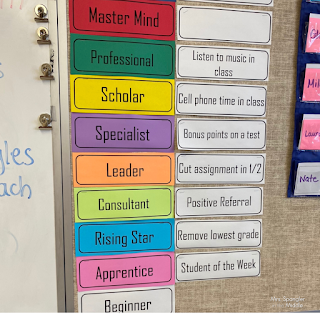A few years ago, I thought all my middle school students knew how to write sentences and basic paragraphs. I mean they were in middle school, right?
But then...well...there were some students who just didn't seem to have these skills. And it wasn't just 1 or 2 of them. So something had to change.
Let's just say I learned a few "do's" and "don't's" that I hope will help you avoid my mistakes.
1. Do use a writing diagnostic. (Don’t expect a certain level of skills like I did.)
Using a writing diagnostic told me exactly where students' skill levels lie. Then, I could make plans to address those gaps.
Before the diagnostic, I thought having good models and some scaffolding through graphic organizers would give the students that struggled what they needed.
After the diagnostic, I saw that direct instruction was going to be necessary.
2. Do set aside time at least once a week for students to work on what they need. (Don't just plow forward and hope the stragglers catch up.)
Too often I thought about the state test in the end and thought that I had to keep moving because otherwise I wouldn't get all the standards "in".
But did I matter how many lessons were taught if they couldn't do the things to reach those standards?
So I had to find a way to do both the intervention and the grade level work. So I settled on one day a week where everyone participated in WIN - "What I Need".
WIN was a worksheet with direct instruction targeting specific skills and then some practice. These were worksheets I curated, and they definitely provided some differentiation, but soon, they became a nightmare to track, and the students weren't really taking any ownership of the knowledge.
I made a set of progressive lessons from sentence writing to paragraph writing to essay writing. Each student worked on their own lesson at their own level so differentiation was built-in. The Lab spans 9 levels and students worked to "level up". It was like a teaching mini-miracle!
3. Do promote progress which builds confidence & ownership! (Don't expect intrinsic motivation in the beginning.)
Students who struggle often do not have much intrinsic motivation because they have been proverbially beaten down by being unable to measure up.
In order to inspire them to focus on progress (not perfection), I have found that I have to provide a little extrinsic motivation.
With the Leveled Writing Lab, students who score 80% or better on 3 lessons level up. And when a student levels up, privileges are bestowed upon that person based on what they stated was valuable to them.
Of course, there are many ways to celebrate progress, but it is critical to find one that works for your students and gives them a boost to move forward in their skills.
These are my top 3 "do's and don'ts" for middle school ELA writing scaffolding and differentiation. Proficient writers don't happen by accident - they are coached up using these methods (and others) to close the gaps.
Thanks for stopping by!
Pin This Post for Later:
.png)



